Who’s to Blame?
Spoiler Alert: Sometimes the ship’s Captain is to blame for being off-course, not the ship.
I have been working with Chip for the past couple of years on just relaxing in the arena. You might know from reading his case studies that he is more of a trail horse than an arena horse. When it comes to arena time, he used to brace his body constantly. He was taught collection as a young chap, but without doing much arena work for many years, his muscles had become weak in a lot of areas.
While he has relaxed overall in the arena, he continues to show me where his weaknesses are by arguing when I ask him for more thoughtful, collected movement. His behaviors are not extreme by any means—the worst he has ever done is try to zig-zag across the arena and offer some weak back-end bucks. On the other hand, though, he is far from supple.
His prior collection training has been a puzzle to me.
Chip will, at times (on the trail, ironically), slow his tempo way down to a slow, prancy trot, and tuck his head back. I absolutely love it. There is something about it, however, that seems stiff and unnatural. Like he’s trying to force his body to do it instead of stretching into his back and through his neck.
I am grateful that Chip knows collection, but I have only seen the frame. All that I know of correct collection indicates that it is supposed to be natural: a combination of strength and suppleness. So, a frame is not collection at all, it is an idea that alludes to collection. A starting point, perhaps, but not the final goal.
What I’ve Tried
Towards the end of collection, I have tried several approaches:
- Loose-rein walk and trot circles, working particularly on bend and light, bare-minimum contact with the bit. I use my seat and legs to shape his body.
- Bringing him into a frame the way he knows it—a lot of bit contact—then easing off the bit and bending from there.
- Extra lunging sessions to build up his lateral muscles (small and large circles) and his hindquarters (trot-to-canter transitions)
I have been alternating between these three approaches, relying most heavily on loose-rein circles. I like how these circles simultaneously help him develop his muscles, as well as think on his own how to carry a rider while bending and reaching his hind end underneath him. Yet there has been something missing, because he will periodically shoot his head up, even when focusing on bending. I don’t like pulling his head into the “correct position” because it takes too much bit contact.
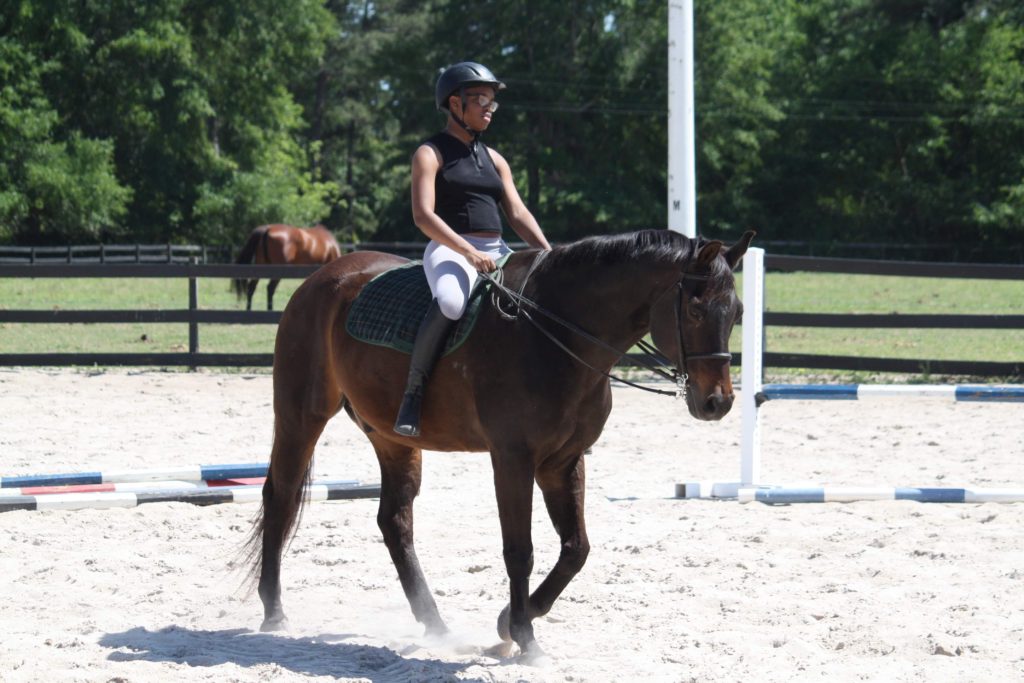
Photo Credit: Milan Berry
The key to get him to drop down his head naturally, and reach his neck through his back to engage his hind end, remained a mystery. That is, until more recently, when I was looking at my own riding and wondering if my posture was affecting him.
This should have been my first question, before going around these circles, literally and figuratively.
A Shift in Perspective and Quick Riding Fix
That day, I didn’t even take the time to put a saddle on him. I just groomed him, threw his bridle on, and started to warm him up bareback in the arena. After several laps at a walk, I went back to our loose-rein circles.
I decided this time to focus on:
- my posture
- my weight distribution
- sinking deep into my heels, and
- breathing deeply
Aside: Note that these were all about me.
This helped with his temperament, but he still carried his head high and his back hollow. I don’t know what dawned on me to try this, but instead of focusing my attention on his head and the reins, and whether or not he was swinging his rear out, I looked up.
I focused on where I wanted us to take the circle, opened up and pulled back my shoulders, and drew my hands with the loose reins like wings out by each side. Either hand stretched at least six inches out from my thigh. Then, I brought my hands down—closer to my thighs—and just relaxed. I had less rein control, but my posture was more balanced, and I paid much closer attention to my seat and legs.
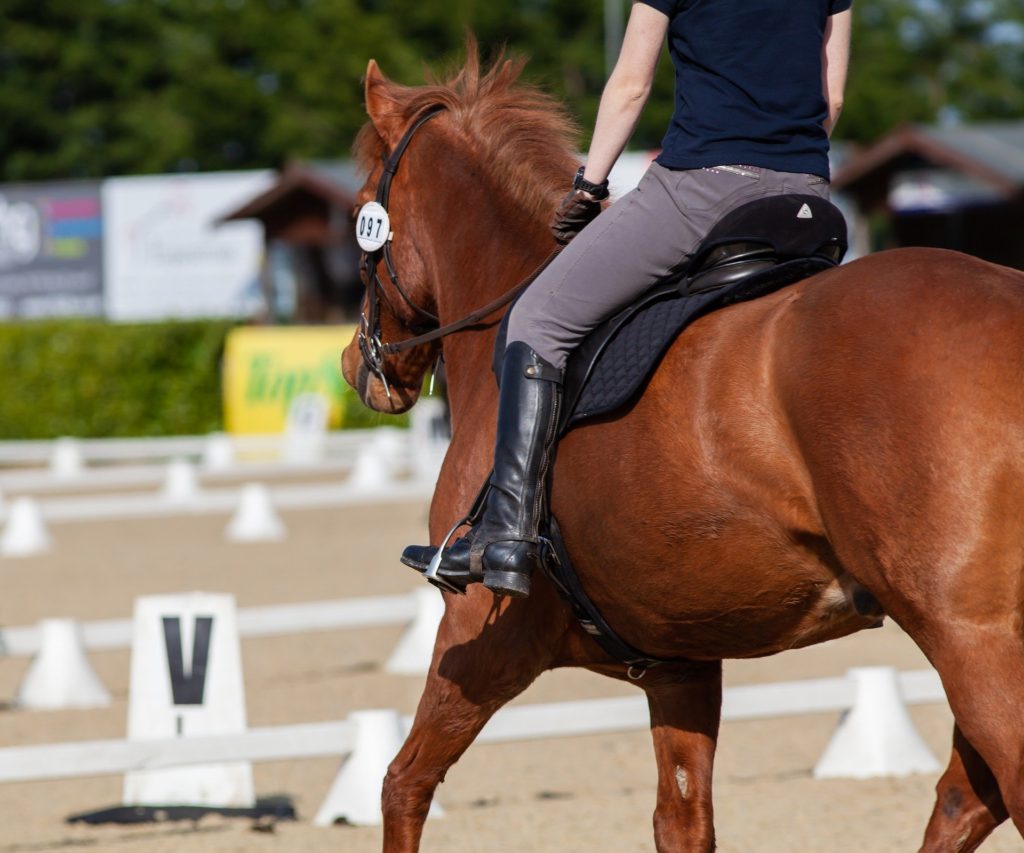
Source: Pixabay
Without even expecting it, Chip began to reach his head downward. His tempo was still strong, but slower and somewhat melodic. It was as though his motion was now intentional and powerful, not just trying to get through the exercise. Amazed, I enjoyed this sweet moment of victory that came at the most unexpected time.
All I had done was stretch my shoulders open and backward, which caused my whole upper body and hips to open up. I realized that the former hip position was pinching him a few inches behind his withers, because I was hunched forward. Opening up my shoulders also caused me to roll my weight backward and bring my head up, moving more inertia towards his hind end. I was simultaneously relaxing and focusing on my seat, which kept me more stable on his back and my hands away, unable to rely on his mouth.
So, It Was Me, All Along
My focus had changed from him to me: his weakness to my weakness. And as it turned out, it was my weakness all along that was keeping him from moving forward towards collection. My poor posture was preventing him from accessing the muscles he needed in his back.
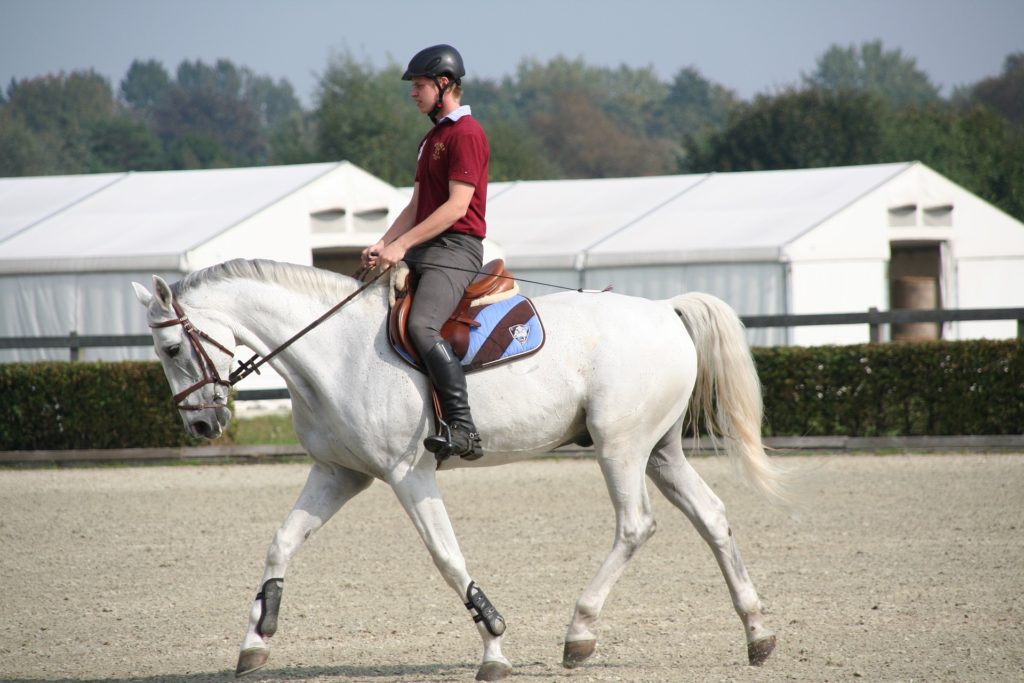
Source: Pixabay
In these posts, I write a lot about acting in the horse’s best interest, and pride myself on “listening to the horse,” but this experience showed me a blind spot. It reminded me that no matter how many years we have been riding, there are always ways we can improve our listening skills and our riding practices. We are, after all, asking them to do the work, not the other way around.
Frequently Asked Questions
How can I improve my horse’s topline?
The muscles along a horse’s topline can be improved with proper nutrition and exercise. Exercises to strengthen the horse’s core will help the topline. Stretching the neck side to side and riding up and down hills can help strengthen and build topline. Adding a supplement high in protein (specifically with balanced amino acids) can help build muscle back up.
It is also important to check your saddle fit—an ill-fitting saddle can cause pain and subsequently affect topline; doing everything right from a nutrition and exercise standpoint will not overcome a poorly fitting saddle.
Regardless of approach, patience is key; it may take weeks, or even months, to see topline results.
Why is my horse losing topline?
Lack of exercise, or lameness, are two reasons a horse may lose topline. If the horse is sound and getting sufficient exercise, evaluating the diet is a good next step.
Generally, grain is formulated to specific protein, fat, and fiber levels, so the best place to start is evaluating your hay. Hay quality can change from year to year and cutting to cutting. If the protein in the hay drops, this may result in a loss of muscle, noticeable across the topline. Adding a supplement high in protein may help build up the muscles and create a stronger topline.
What should a horse’s topline look like?
A good topline spans from the poll of the horse to the tail.
- The musculature should look even, with the neck smoothly transitioning into the withers and shoulders.
- There should be no abrupt angles or gaps.
- The spine should be toned evenly across the back and into the croup.
- The withers should blend into the neck, shoulders, and back; if they look bony or have any sharp angles, this is a sign of a problem in the topline.
- No vertebrae, from ears to tail, should be visible.
- The horse should have a rounded, athletic appearance; do not confuse an overweight horse with a good topline.
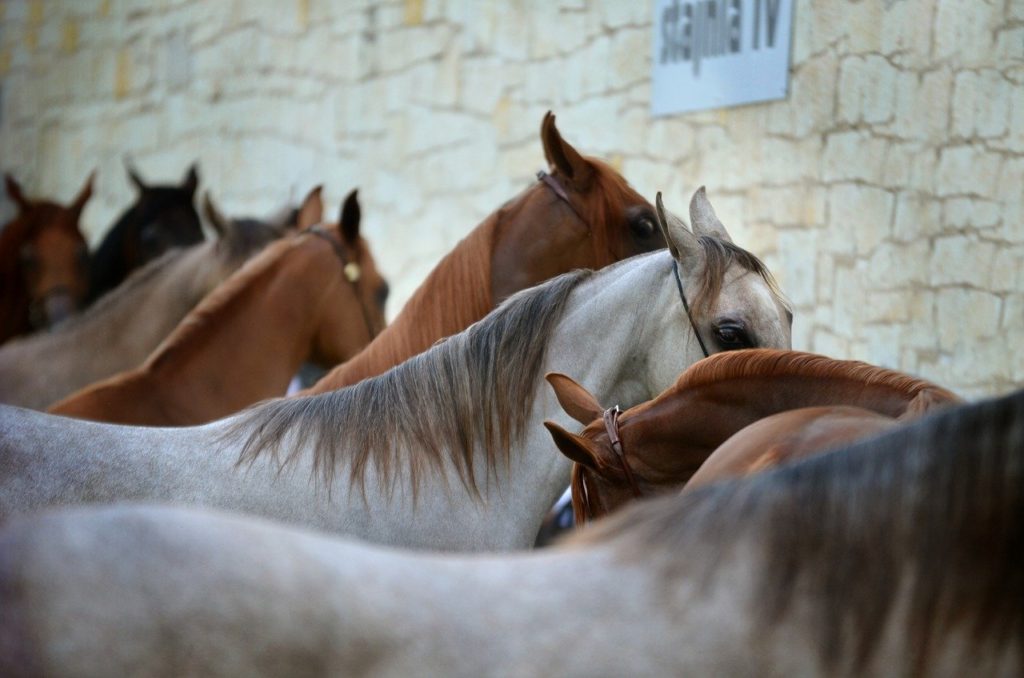
Source: Pixabay
What is the best horse topline supplement?
While there are many topline supplements out there, it is important to find the right choice for your horse.
If you have ruled out:
- Nutrient deficiencies in hay and grain
- Saddle fit issues
- Improper exercise
Then adding a supplement may be the solution you need to build topline. The best supplements will have a balanced amino acid profile. Essential amino acids are the building blocks for muscle; simply adding crude protein to the diet won’t necessarily help.
Reputable feed companies will balance the limiting amino acids in the feed to ensure proper absorption. I have personally fed Nutrena’s Topline Balance as a supplement and have seen impressive results.
P.S. Enjoy this article? Trot on over to:
- Horse Riding Equipment List: What You Need & What You Don’t
- 3 Reasons Horse Riding is Fun (And Worth It!)
- Shelby Dennis: Best Horse Riding Advice & Biggest Rookie Mistakes
- 3 Riders on Equestrian Bullying (And What You to Do About It)
- Harriet Upton: From Junior Team GB to Riding for the Queen
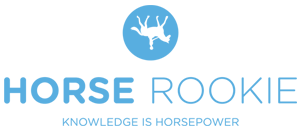
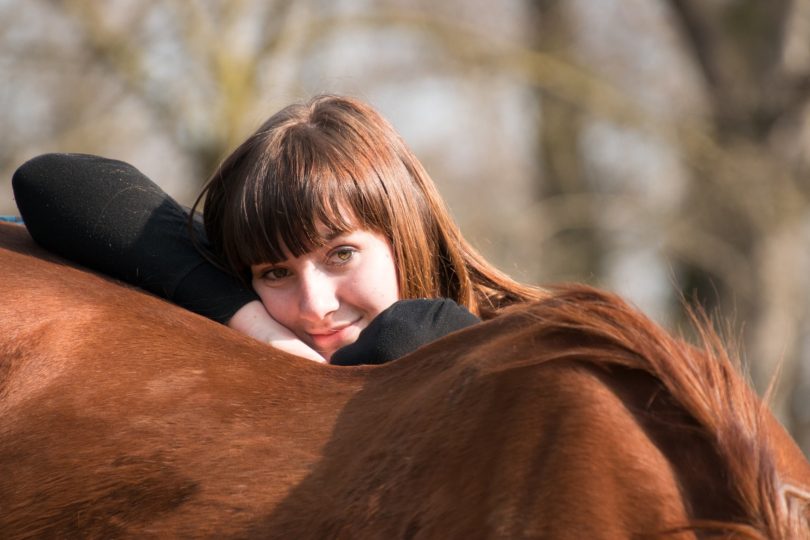


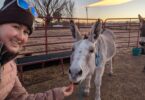
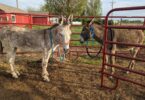


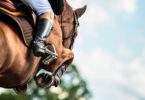
[…] The topline and muscles of the horse’s hindquarters, starting at the hip and ending at the dock of the […]
[…] pads are especially great for older horses with diminished toplines (e.g. sway […]
[…] solution. With a versatile chocolate brown leather, fancy stitching, and a traditional dipped topline, these boots go with […]